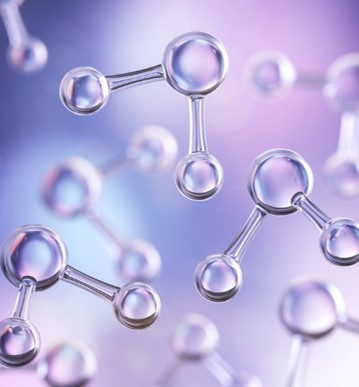Sustainability is crucial to the planet's future, and hydrogen is the key to renewable energy, but how is it created? This can be done with the help of technologies such as Proton Exchange Membrane (PEM) electrolysis which produce hydrogen and store it as energy and fuel.
PEM water electrolysers can be used to store energy from wind turbines and solar cells (generating 'green hydrogen') or in localised hydrogen production to provide low-carbon heating fuel for homes and businesses. The technology enables the management of high current densities from dynamic energy sources (such as wind energy), as well as generating green hydrogen with the high purity necessary for fuel cells.
The process of PEM water electrolysis releases no harmful greenhouse gas emissions at any stage of the process and so, it is clear why it has been identified as a key enabler of the global energy transition. However, the challenge currently facing the Hydrogen Industry, is that, in order for this valuable energy resource to become mainstream, the technologies that generate Green Hydrogen must be cost-effective, efficient and scalable.
What Are PEM Electrolysers?
PEM electrolysers are electrochemical systems that carry out the electrolysis of water. PEM electrolysers consume an electric current, generated from renewable energy, to split the water into its component molecules hydrogen and oxygen. As a result, green hydrogen is produced, which has the potential to change the way we fuel our cars and other modes of transport as well as the way how we heat our homes, businesses and power industrial processes.
How Do PEM Electrolysers Work?
A PEM electrolyser cell stack has a number of components, these include a cathode, an anode and a selectively permeable proton exchange membrane, as well as cell separators or bipolar plates, and flow distributors such as porous transport layers (PTL’s).
Depending on the application and energy source PEM electrolysers can be scaled up or down utilising multiple stacks to produce the energy output required.
Water is fed consistently into the electrolyser and is split by an electrical current into its component molecules hydrogen and oxygen. At the anode the water reacts to form oxygen, positively charged hydrogen ions (protons) and electrons. The electrons then flow around an external circuit and the hydrogen ions move across the selectively permeable membrane to the cathode where they recombine with the electrons to form hydrogen gas.
This gas can then be used straight away or stored as a liquid or gas for future use.

Coatings and Catalysts for PEM Water Electrolyser Cell Components
PEM electrolysers contain a number of titanium components; this makes them highly vulnerable to oxidation and degradation due to the water intensity of the process. Adding a protective coating to the cell separators, bipolar plates and porous transport layers prevents corrosion, lowers the interfacial contact resistances and maintains this low resistance for 10,000's hours, increasing the efficiency and lifetime of the system.
As well as producing these component coatings, TFP Hydrogen also produces catalysts for catalyst-coated membranes (CCMs), including both anode catalysts (IrO2 and IrRuO2) and cathode catalysts (Pt/C). Formulated to enable the system to operate at a low voltage, improve long-term durability and ensure high performance over 10,000s hours; these catalysts are highly dispersible into inks and, in testing stages, came out top in performance and durability evaluations.
All of these benefits mean that the electrolyser system is able to operate at high energy efficiency over long time periods, which is necessary to make green hydrogen production more competitive and facilitate the drive towards making it a future mainstream energy source.
The Key Benefits of TFP Hydrogen’s Materials for PEM Electrolysers
At TFP Hydrogen Products we are committed to facilitating the advancement of electrochemical, low carbon technologies that can be used to generate green hydrogen from renewable energy sources.
We offer solutions for PEM water electrolysers where our specialist coatings and high-performance catalysts are proven to significantly increase the efficiency, durability and lifetime of the systems, reducing running cost and also increasing the lifetime of the asset – ultimately, reducing the long-term cost of green hydrogen production.
To speak to us about our coatings or how we can help with your hydrogen products, feel free to get in touch.


Need more information?
Please get in touch...
